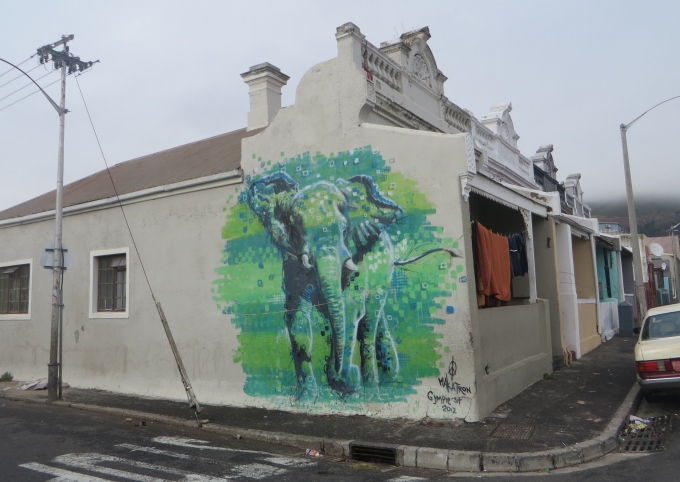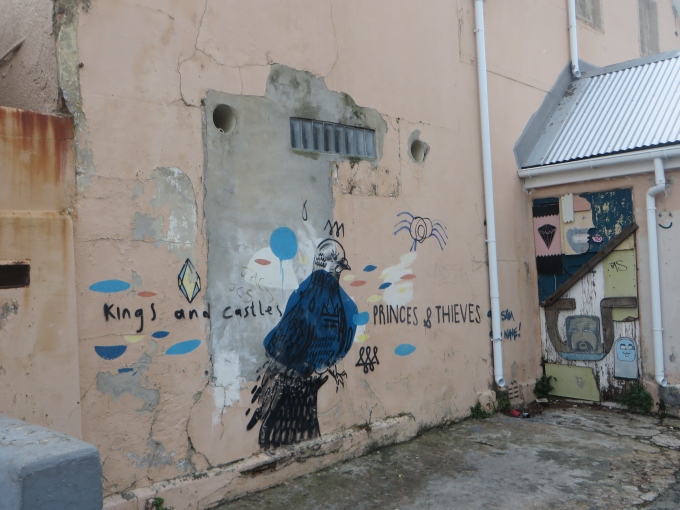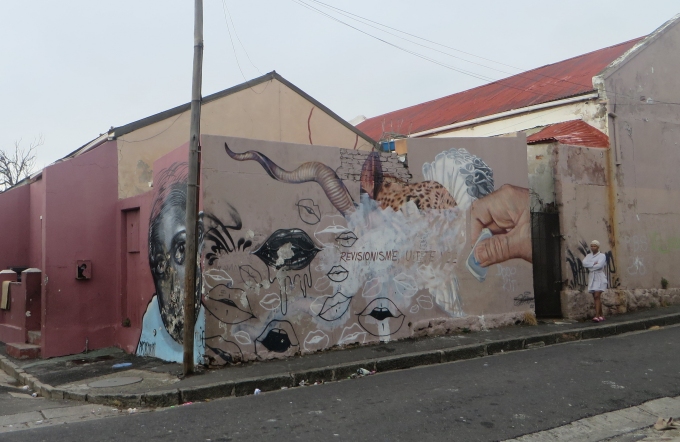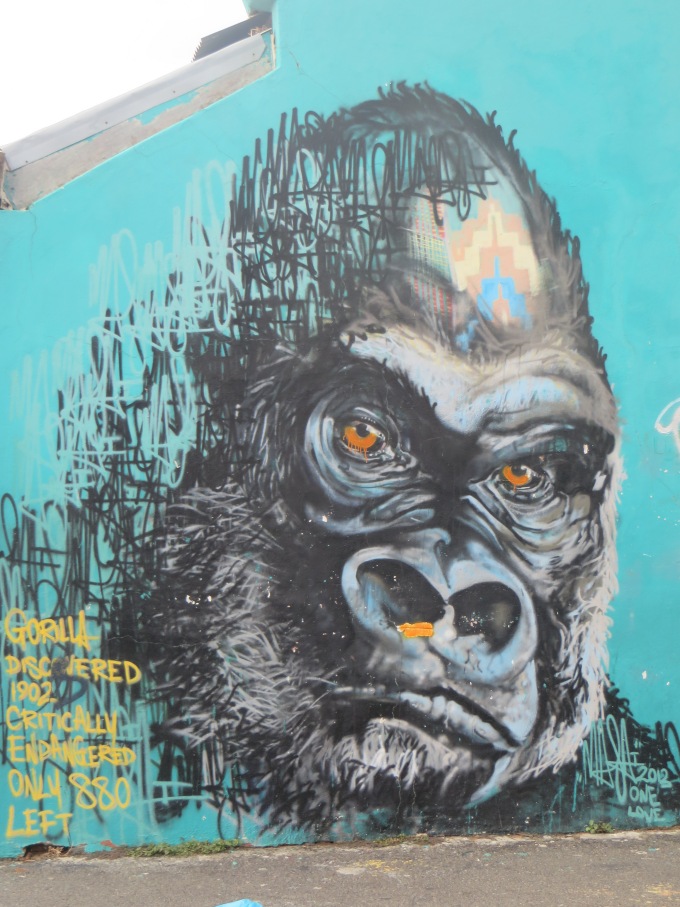As usual, one of the best parts of exploring a new city is wandering, sometimes aimlessly, to see what we can see. There is no dearth of statuary in Paramaribo. There seem to be monuments and statues at each little square spread throughout the town, however many times the plaques are missing or weathered beyond legibility. We enjoyed the walk and did our best to identify what we could.
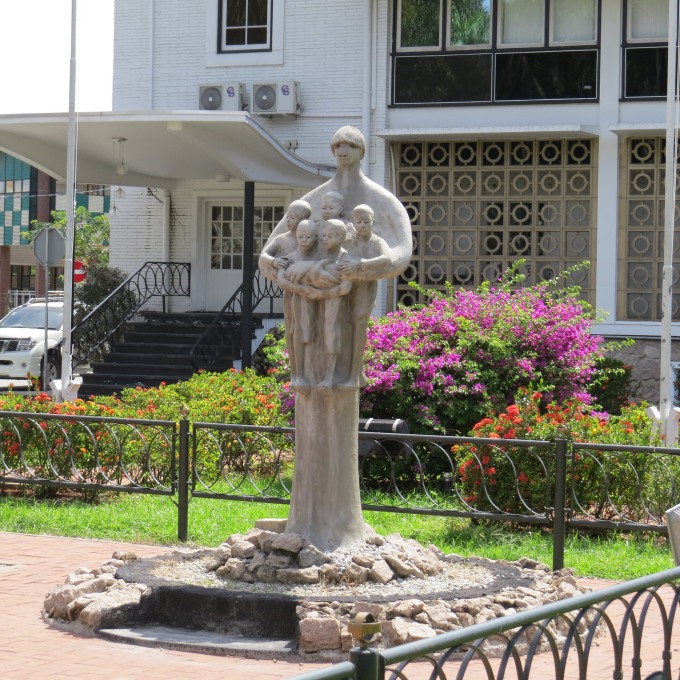
This bronze statue of three girls was in a tiny square on our walk into town each day. It had no plaque or description, but I learned later that it was a “gratitude gift” from the Netherlands to thank the Surinamese for their help during WWII.
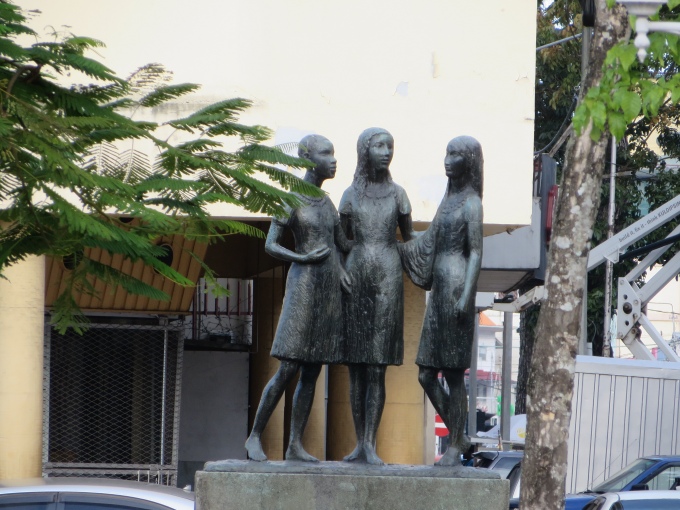
We had to walk out of our way to find this aluminum sculpture representing the first two Indian indentured laborers who immigrated to Suriname and arrived aboard the Lalla Rookh in June 1873. Located in a beautifully kept little park, this statue is dedicated to the 34,000+ Hindustanis who made the voyage between 1873 and 1916 and the heritage and culture they built over the years for their Surinamese descendants.
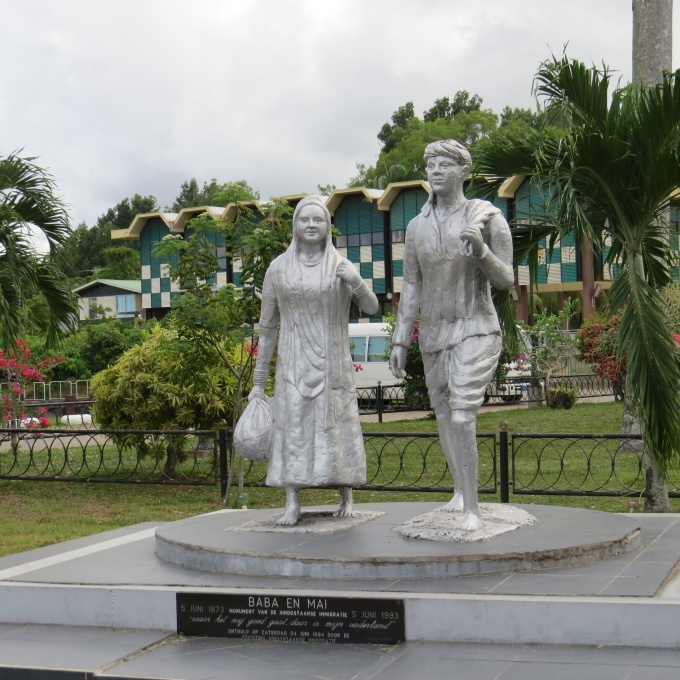
Mahatma Gandhi, a little, unassuming fellow, stands tall and proud near the Central Market area.

I ♥ SU – Found this not far from Fort Zeelandia. No info was provided, but the artwork says it all.

The plaque was missing, but info on the Internet indicates that this sculpture situated in the middle of a non-functioning fountain was to commemorate Surinamese independence in 1975. Note the carillon in the background.

This obelisk, its top atilt, sits in a dominant location on the foreshore, but I could find no information about it, its significance or its creator.

My favorite statue was Kwakoe breaking away from his chains and symbolizing the end of slavery in Suriname in 1863. He was located in a small, very busy square not far from our hotel. Unfortunately, someone walked off with the sculpted bronze broken chains that once dangled from his wrist manacles. One reference to this statue indicates it is called Keti Kati (Chains are cut).

Queen Wilhelmina, Queen of the Netherlands 1898-1923, stands regally outside the walls of Fort Zeelandia overlooking the Suriname River.

A tribute to Johannes Helstone, Surinamese-born pianist and composer was quite impressive, but sadly defaced.

We ignored most of the politicians' statues, except for the rotund figure of Johan Pengel, Minister-President from 1963-1969, standing portly in Independence Square. How can you neglect a bronze belly like that?
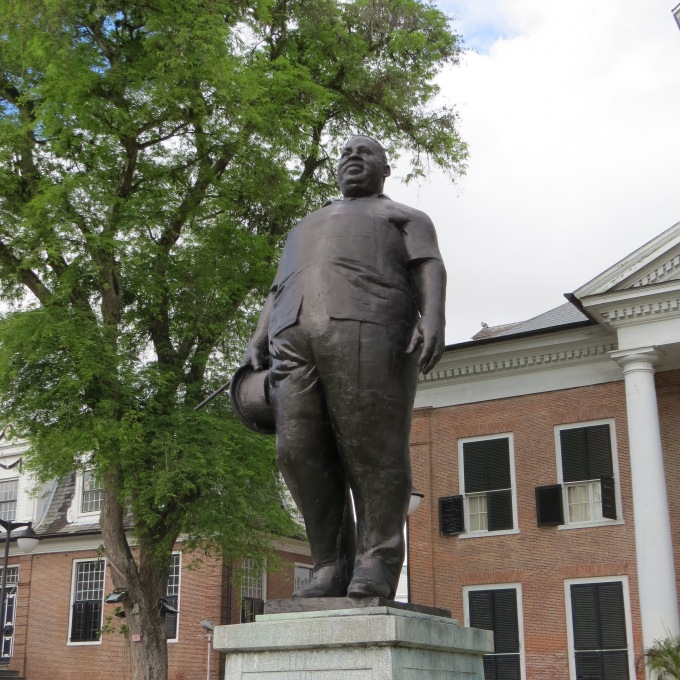
There was not as much street art as I would have imagined. Perhaps, we looked in the wrong places. We liked what we saw though.

Today's Dutch word – standbeeld – statue
Tomorrow … we're checking out Parbo's many houses of worship … mosques, temples, synagogues, cathedrals. Dress appropriately and put on your walking shoes.

























